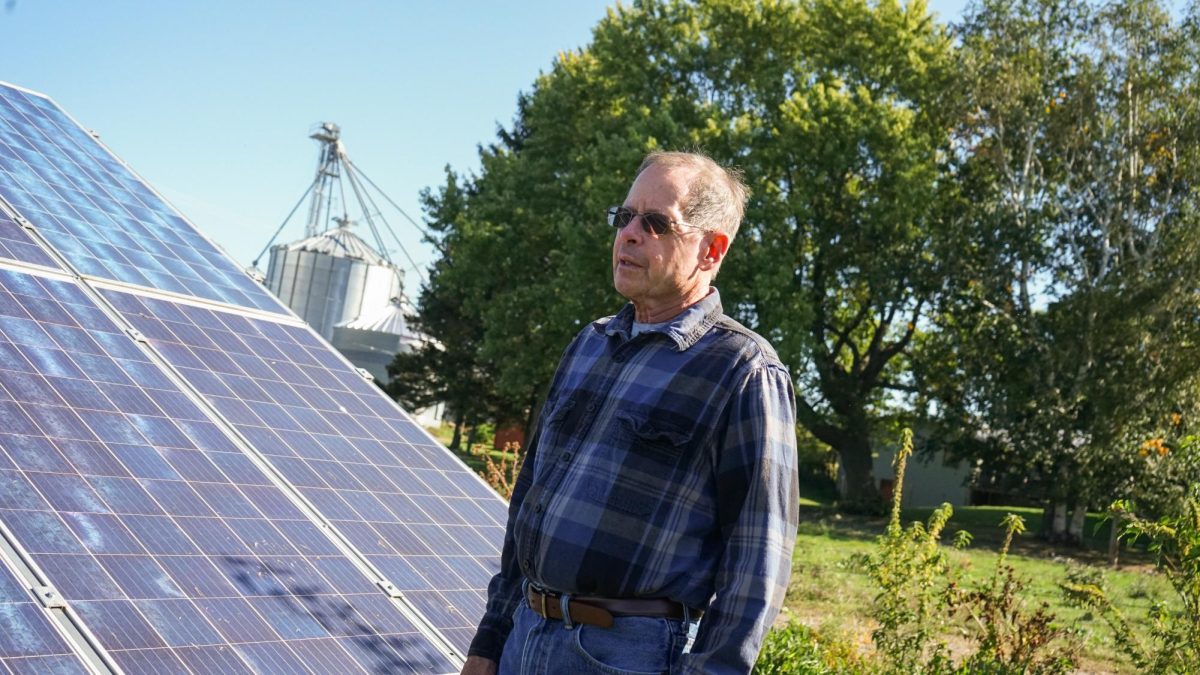Key Points
- A rainy summer in the Ithaca area impacted some of the region’s agriculture.
- Runoff from the rain also caused harmful algae blooms to develop in Cayuga Lake.
- The Ithaca College Natural Lands were also damaged by the rain
For Eric Benner, rain is typically good news. This summer was a different story, though.
“I lost a lot of my winter squash, some salad mix and arugula because it was too wet,” he said. “The salad mix and arugula are my highest grossing crops.”
Benner, who owns PoleStar Farm, was referring to the large amount of rain the Ithaca area received this summer. According to the Northeast Regional Climate Center, July saw the largest amount of rainfall during the summer of 2017. During that month, for example, Cornell University received 74 percent more rain than usual.
This barrage of precipitation translated into a loss of $500 to $1,000 worth of Benner’s arugula and salad mix.

The rain also affected other local farms. Erica Merwin of Black Diamond Farm said while the rain made fruits bigger, it caused a decline in the output of specific crops.
“Our cherries and peaches were affected the worst by the rain because we had a lot of them that just rotted on the tree,” Merwin said.
Not all Ithaca area farms were affected by the summer rain. Reuben Granskog, co-owner of Birdskog Farm, didn’t see an impact. One reason is that his farm has raised beds for crops, which allows the land to dry faster.
“Everything grew well,” he said. “I don’t think we had anything that really struggled.”
Algae blooms in the lake
Agriculture wasn’t the only ecosystem impacted by the heavy rain. Samantha Hillson, director of health promotion at the Tompkins County Health Department, said the precipitation caused runoff rich in nutrients to flow into Cayuga Lake. This then created harmful algae blooms in the lake.

Hillson said anyone exposed to the algae through skin contact or by swallowing affected water can experience rashes, nausea and diarrhea. Those on the lake who see something they believe could be the algae should contact the New York Department of Environmental Conservation, Hillson said. She said people should be on the lookout for specific colors in the water.
“A lot of people describe it as pea soup,” Hillson said of the algae. “It’s greenish in color, sometimes it looks like a paint swirl in the water.”
The amount of toxic algae in the lake is dwindling, Hillson said, although there are still some harmful blooms present. As the weather gets colder, though, Hillson said the algae will disappear.
However, she believes the blooms are likely to return to the lake next year if there is another rainy summer.
Hiking paths
Trails were also impacted by the summer rain. Jake Brenner, the faculty manager of the Ithaca College Natural Lands, said moisture from the rain seeped into the Natural Lands’ soil, creating lots of mud.
In response, Brenner put in rock slabs over the mud and also facilitated the digging of trenches and ditches to filter the water off the trail.

Overall, he said the rain made the upkeep of the Natural Lands more difficult.
“The soil moisture issue was bad this year,” he said.
Other natural areas were more fortunate. David Priester, vice president and trails chair for the Cayuga Trails Club, an affiliate of the Finger Lakes Trail system, said the portion of the trail in Tompkins County largely escaped damage from the summer rain.
Priester said because many rain events this summer were localized, precipitation that impacted parts of Tompkins County missed the trail. In past years, however, Priester said rain has caused a lot of damage on the trail.
“We dodged a bullet this year,” he said.






